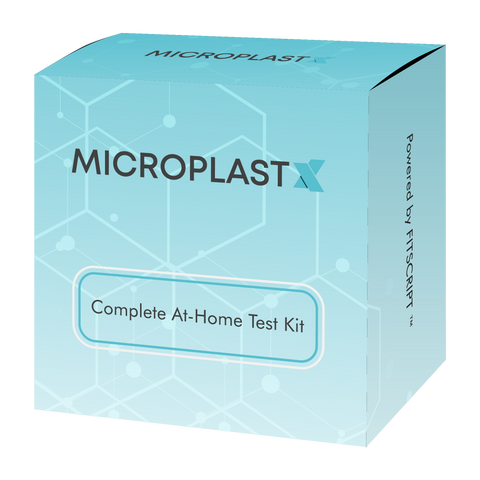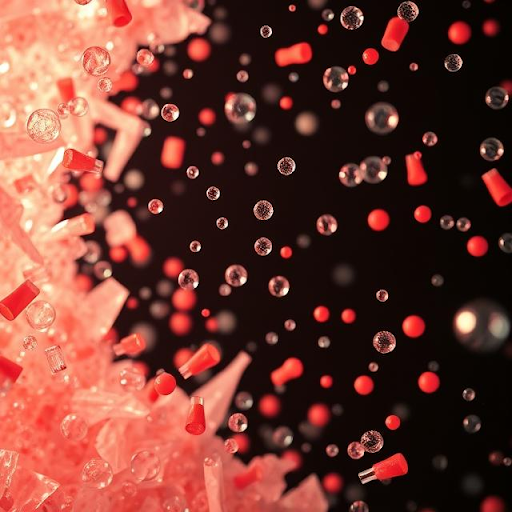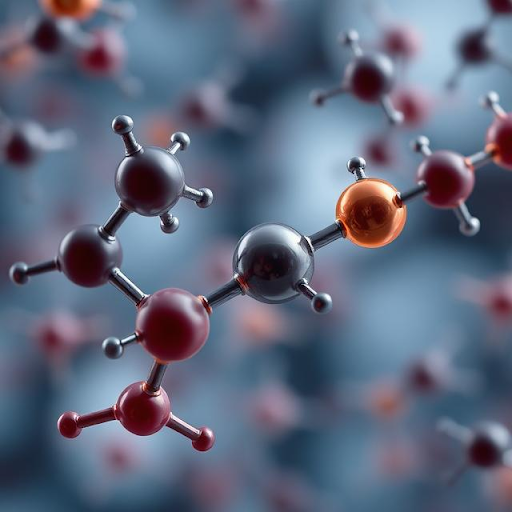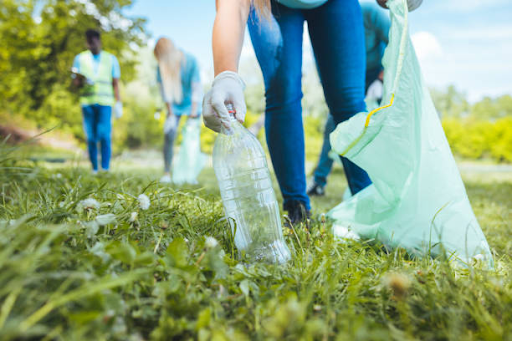Are There Microplastics in Breast Milk? Risks for Babies & How to Reduce Exposure
It’s becoming harder to ignore the facts: yes, there are microplastics in breast milk. Recent findings are showing that even in carefully controlled environments, plastic particles are ending up in what should be one of the purest sources of nutrition for infants. These particles are tiny—often invisible—but their potential impact is big, especially for babies.
Even Plastic-Conscious Families Are Still Exposed
Many parents are surprised to learn that microplastics can still show up in breast milk, as studies have shown, even after switching to organic food, glass bottles, and filtered water. The reality is, avoiding plastic in today’s world is incredibly difficult. Microplastics come from packaging, tap water, airborne fibers, and even dust. So even those doing everything “right” may still be affected.
That’s why the question is, are there microplastics in breast milk? matters so much right now. It’s no longer a fringe concern—it’s something every new parent needs to consider, regardless of their lifestyle.
Microplastics in Infants Raise Bigger Health Concerns
When plastic particles make their way into the bodies of infants, the risks may be even more serious. Babies are still developing their immune systems, digestive tracts, and protective barriers, which means even small exposures could affect their growth and development. This rising concern around microplastics in infants has families searching for immediate ways to reduce the threat.
At MicroplastX, we make it easier to take control of your environment by offering at-home kits that detect microplastics in your blood from household items, including those related to breastfeeding. Knowing what’s in your surroundings gives you a clear starting point. If you’re looking to take that step, you can learn more about how the testing process works on our page dedicated to understanding microplastic exposure.
How Do Microplastics Enter Breast Milk?
Microplastics don’t need an obvious entry point. These particles make their way into the body through the food we eat, the air we breathe, and the things we touch. Once inside, they can travel through the bloodstream and reach breast tissue, eventually showing up in breast milk.
The Everyday Sources That Are Easy to Miss
Most of us interact with plastic every day without realizing it. Heating leftovers in plastic containers, drinking from soft plastic bottles, or wearing synthetic fabrics can all increase exposure. Microplastics also collect in dust that floats through the air and settles on food or bottles. These small habits add up and contribute to the larger issue of microplastics breastfeeding risk.
Here are a few everyday items that can lead to exposure:
-
Plastic food containers, especially when used in microwaves
-
Reusable plastic water bottles that show signs of wear
-
Polyester or nylon clothing that sheds fibers in the wash
-
Dust from furniture, packaging, and carpets inside the home
Identifying Risky Sources With MicroplastX
Pinpointing where microplastics are coming from is the first step in reducing them. That’s what we help with at MicroplastX. Our blood testing kits are designed to help families understand which items in their environment may be contributing to exposure. This information makes it easier to make smart decisions about what stays and what goes.
If you're unsure how to begin, we walk you through every step—from collecting samples to reviewing results. You can find everything you need to get started on our how-to page, where we explain the testing process in simple, clear terms made for families.
Are There Health Risks for Babies From Microplastics in Breast Milk?
It’s a question a lot of parents are asking: are there microplastics in breast milk, and if so, are they dangerous for babies? The short answer is that scientists are still learning about the full effects, but what they’ve found so far raises concerns. When it comes to microplastics in infants, early exposure could potentially affect how their bodies grow and develop.
Babies Are More Sensitive to Microplastic Exposure
Infants are more vulnerable than adults for a few reasons. Their organs are still forming, and their immune systems haven’t fully matured. What may seem like a small amount of microplastics in breast milk for an adult could have a bigger impact on a baby. This doesn’t mean parents should panic, but it does mean awareness matters.
Studies suggest microplastics may lead to inflammation or disrupt how hormones work in the body. While nothing is confirmed yet, health professionals agree that reducing exposure—especially during early development—is a smart step. That’s why families are becoming more proactive about testing and prevention.
What We Know and What We Don’t
There’s still a lot we don’t know. Microplastics haven’t been around long enough for researchers to fully understand how they affect human health over decades. But what we do know is enough to justify early action. When parents ask about microplastics in breastfeeding, it’s not about fear—it’s about staying informed and ahead of the issue.
A detailed analysis by the EHP proves how environmental exposures like plastics may have long-term consequences for infants and toddlers. While the research continues, experts agree that taking early action is wise.
That’s why tools like the testing kits from MicroplastX are helping families take that first step. Understanding the microplastics in your blood, and what might be getting into breast milk, gives you the power to make real changes. It’s about progress, not perfection.
How To Tell If Your Baby Has Been Exposed to Microplastics
Since you can’t see microplastics, many parents are left wondering if their babies have already been exposed. The truth is, there aren’t specific symptoms that directly point to microplastic exposure. But there are some signs that could make parents want to look into it further.
Watch for Common but Subtle Symptoms
When microplastics show up in breast milk, they might not cause dramatic symptoms. But some parents notice issues that seem to appear out of nowhere. These could include:
-
Unusual digestive discomfort
-
Sleep that becomes more disrupted or irregular
-
Skin that seems easily irritated or rash-prone
-
Trouble settling after feeding
-
Frequent fussiness with no clear cause
Of course, these symptoms can happen for many reasons. But if they’re happening alongside daily plastic use or known exposure, it’s worth looking into. Microplastics in infants may not show up on medical tests right now, but keeping track of patterns can still guide smart decisions.
Prevention Matters More Than Diagnosis
At MicroplastX, we focus on prevention. That’s why we offer test kits that help parents screen for potential plastic contamination in feeding tools, containers, and other household items.
By catching these problems early, families can reduce exposure before it turns into a bigger issue. The testing process is simple and doesn’t require a lab visit. You can learn more about how we support prevention efforts by visiting our main site, where we walk through exactly what the process looks like and what to expect next.
How MicroplastX Helps You Test for Microplastics Safely
Testing for microplastics at home may sound complicated, but it doesn’t have to be. Families are now looking for clear answers to questions like are there microplastics in breast milk?, and MicroplastX makes it possible to find out.
What the Testing Process Looks Like
We’ve designed our test kits to be as simple as possible. When you order from MicroplastX, you get to test your body for microplastics at home without any complex lab equipment.
Here’s what happens:
-
You choose what items you want to test
-
Collect small samples using the tools we include
-
Send them back to our lab using the prepaid packaging
-
Review your results once the analysis is complete
The process is straightforward, and you don’t need any technical background to do it. Many parents are surprised at how easy it is to understand the findings and what they mean for their home setup.
Why Testing Gives You Back Control
Knowing what’s in your home can help reduce the risk of microplastics in breast milk. When test results confirm the presence of certain plastics, you can swap out or stop using those products. It’s a small step that can make a big difference—especially for new families focused on limiting microplastics in infants.
We built MicroplastX around that goal: giving families better tools to make smarter choices.
Best Practices for Reducing Microplastics in Breastfeeding
Once you know there are microplastics in breast milk, it’s only natural to ask how to reduce them. Luckily, there are several easy, practical changes that make a difference. Most of these can be done with little cost and effort—and they go a long way in limiting your baby’s exposure to plastic particles.
Everyday Changes You Can Start Today
Even small changes can help lower the amount of microplastics that enter your body and reach your breast milk. If you’re breastfeeding, it’s worth reviewing your daily habits and making a few adjustments.
Here are some of the most effective steps:
-
Use glass or stainless-steel baby bottles instead of plastic
-
Avoid plastic-wrapped foods whenever possible
-
Don’t microwave food or milk in plastic containers
-
Wash synthetic clothes less often and in cold water
-
Keep your home well-ventilated and vacuum with a HEPA filter
-
Choose wooden or metal utensils and food prep tools
These simple actions help lower microplastics breastfeeding exposure over time. It’s not about being perfect—it’s about reducing the buildup wherever you can.
Let MicroplastX Help You Go Further
Of course, some sources of exposure are harder to notice. Our test kits can help you go beyond guesswork by identifying your microplastics levels in your blood. When families combine everyday habits with test-based decisions, the results are stronger and longer-lasting.
To see how our testing works or to get started with a kit, just visit our main site. Everything you need is explained step-by-step, and you can feel confident taking action right away.
Safe Disposal Tips for Items That May Leach Microplastics
Knowing there are microplastics in breast milk is one part of the equation. The next step is figuring out what to do with the items in your home that might be contributing to the problem. A lot of families are surprised to learn that throwing these items into the regular recycling bin may not be the best idea.
What Should You Consider Tossing?
Some household plastics break down faster than others and are more likely to leach microplastics during breastfeeding or food preparation. When these items get worn out, cracked, or cloudy, it’s time to let them go.
Pay special attention to:
-
Old or discolored breast pumps and accessories
-
Plastic baby bottles that have been heated over and over
-
Sippy cups with bite marks or scratches
-
Food storage containers that no longer seal properly
-
Disposable plastic utensils and takeout packaging
-
Any plastic item that smells strange after washing
These products may not look dangerous, but repeated use or high heat can cause tiny plastic fragments to break loose. Those fragments could make their way into your body and eventually into your breast milk.
Why Regular Recycling Isn’t Always Enough
Some plastics, even when recycled, don’t get processed in a way that removes microplastic risk. In fact, recycling certain plastics can sometimes release more microplastic particles into the environment. That’s why careful disposal is just as important as choosing safer products.
If you’re not sure what items in your home might be an issue, MicroplastX can help you figure that out. Our testing kits let you check your microplastics levels in your body. When you have that information, it’s easier to know which products to replace and how to dispose of them responsibly.
Can We Fully Eliminate Microplastics in Breast Milk?
This is one of the most common questions we hear: can we completely avoid microplastics in breast milk? The honest answer is that total elimination probably isn’t possible. Microplastics are all around us, in places we can’t always control. But that doesn’t mean there’s nothing you can do.
It’s Not About Perfect—It’s About Better
Trying to live completely plastic-free can feel overwhelming, especially for new parents. But small changes really do add up. The more you learn about your environment, the more control you gain over what’s entering your body—and what’s passed on to your baby.
What matters most is progress. Reducing exposure to microplastics in breastfeeding and baby-related items is a huge step forward, even if you can’t eliminate every particle.
Let MicroplastX Help You Stay One Step Ahead
That’s why MicroplastX exists. We help families take smart, realistic steps without stress or guesswork. When you use our test kits, you’re not aiming for perfection—you’re building confidence in your home and choices. It’s about doing what’s possible, not chasing the impossible.
If you’re ready to learn more or get started, everything you need is laid out on our how-to page. From the testing process to understanding your results, we walk you through it clearly and simply so you can feel good about the actions you take.




